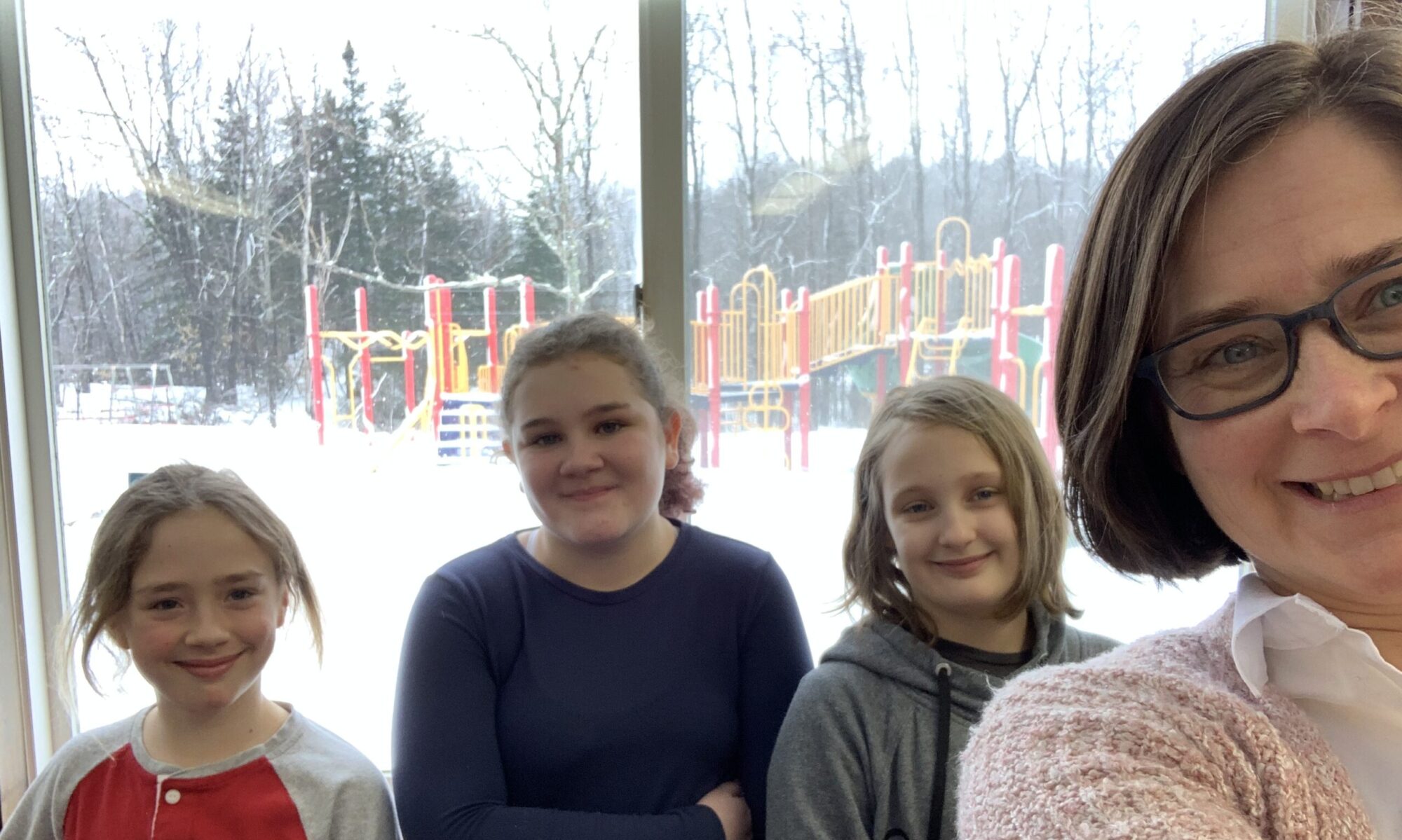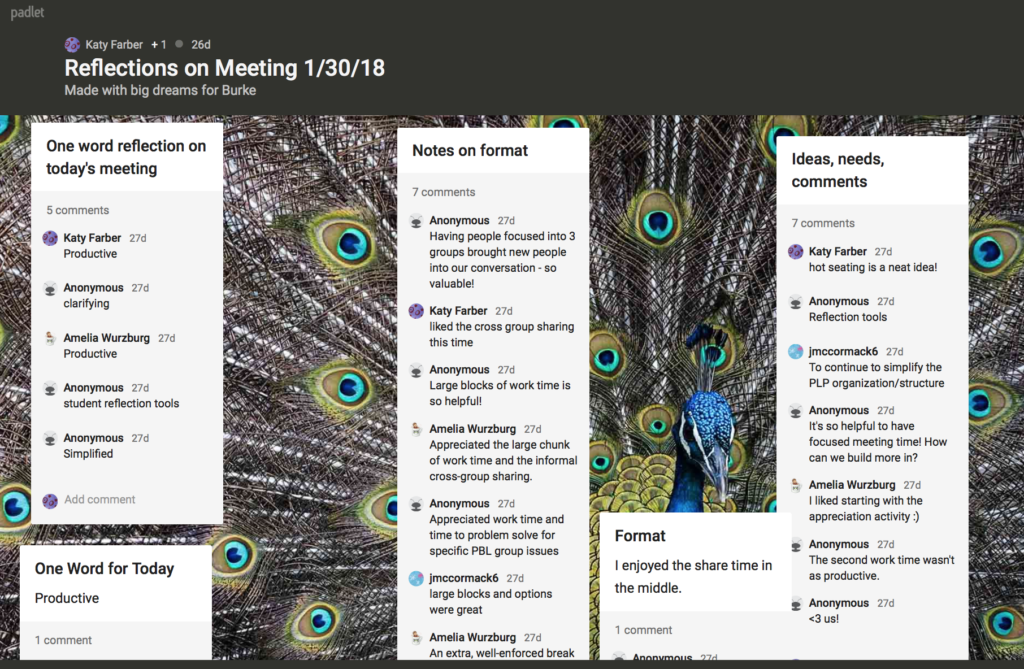Virtual bulletin boards to go!
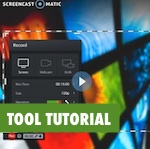 Staying organized as a teacher can be a major challenge. Between student work, teacher plans, sticky notes, school supplies it’s easy to get buried and overwhelmed! This can especially be hard in a personalized learning environment, where students are often working at different paces, with different resources.
Staying organized as a teacher can be a major challenge. Between student work, teacher plans, sticky notes, school supplies it’s easy to get buried and overwhelmed! This can especially be hard in a personalized learning environment, where students are often working at different paces, with different resources.But whether you’re leading project-based learning, genius hours, or makerspaces, Padlet is a great online tool for teachers. Think: organized digital sticky notes in a colorful, shareable fashion.
Here are 6 ways teachers are using Padlet with their students:
1. To curate resources for kids.
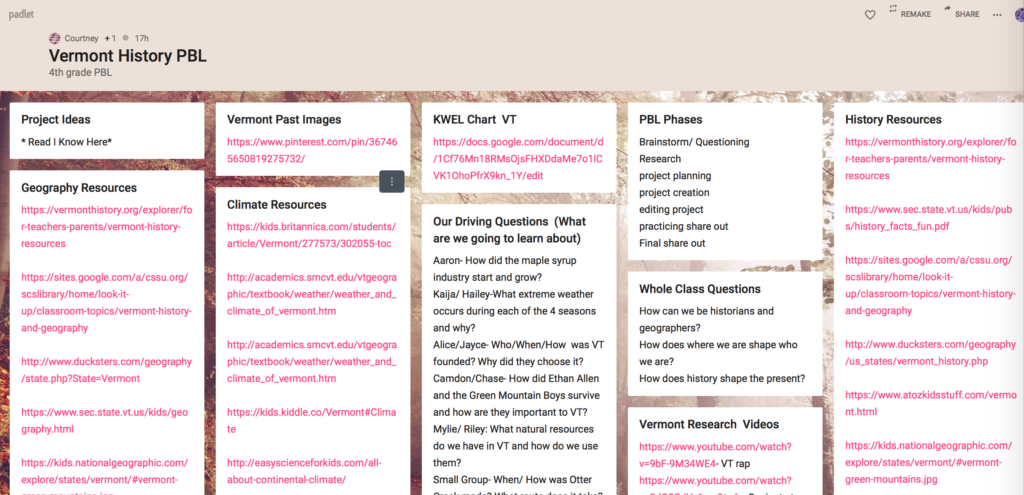
We know that dropping kids into the internet without some sort of scaffolding for their research is kind of like dropping them into the middle of a jungle. Overwhelming! Confusing!
Teachers will select resources for student research that match their students’ needs, and post them on a padlet, then share the padlet address through Dojo or Google Classroom or the link just on the whiteboard or smartboard. Then kids can research, but only from a curated list of resources.
2. Text sets
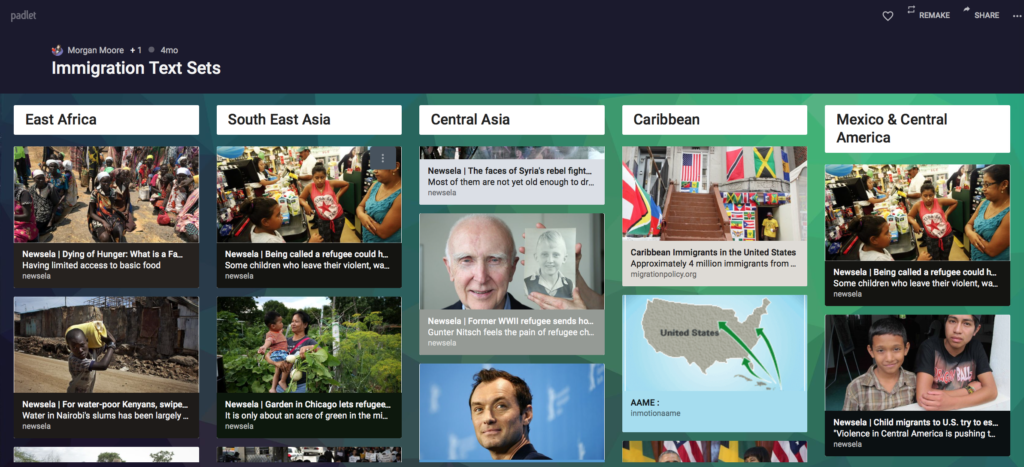
This is a useful and exciting extension of the idea above. Teachers can give students choice in the text they use to research for particular projects. I’ve seen teachers use padlet to organize text sets around various themes, such as immigration (sorted by region of the world).
3. To organize activities in project-based learning
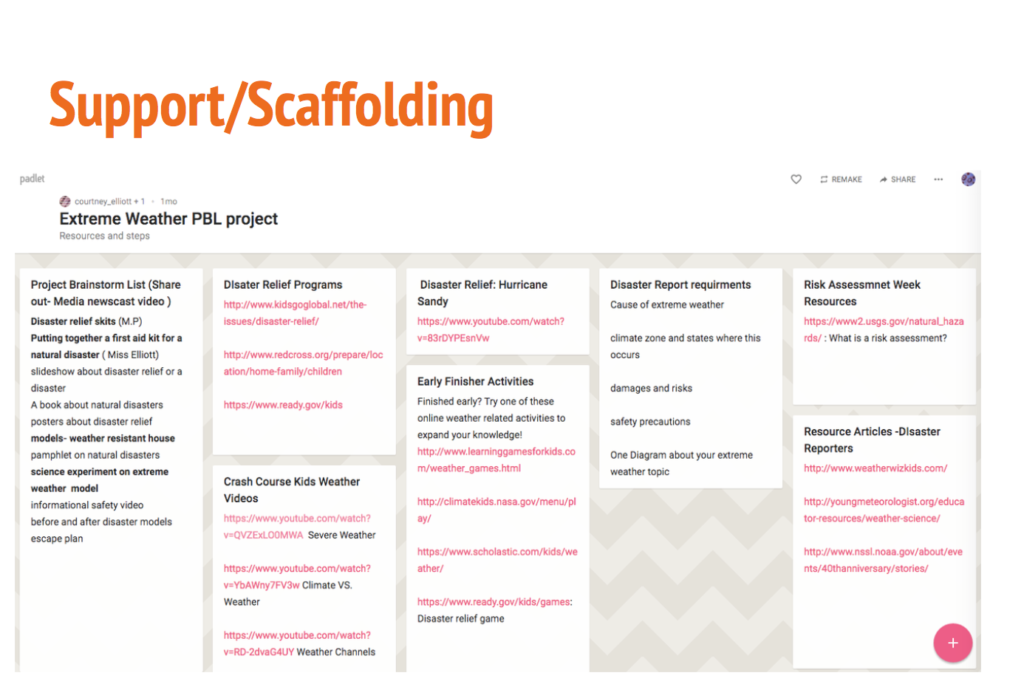
Sometimes the more open structure of project based learning can be challenging to students AND teachers. A Padlet posted on the Smartboard during class can act as an anchor and structure for teachers and students.
As in, this is a research day, this is a note taking day, this is a contact one of these community member day, and so on, and linked resources for each day/lesson/activity.
4. To organize links to share in a teacher presentation
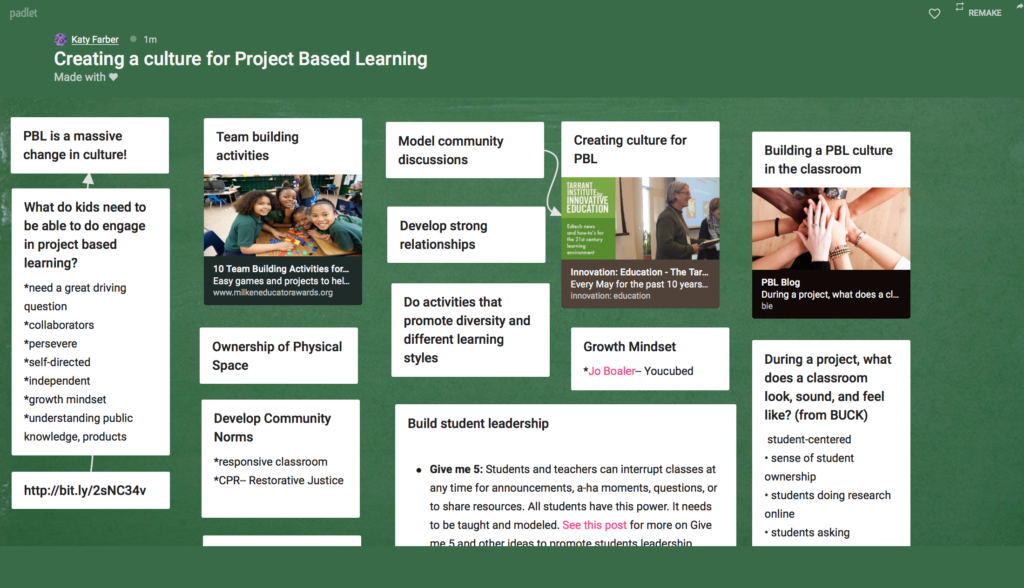
I use it quite often for this, working from left to right with quotes, images, links, and ideas I want to talk about in a presentation. I sometimes also use Padlet to organize the presentation, and then can create another presentation from it easily.
5. Creating playlists and pathways
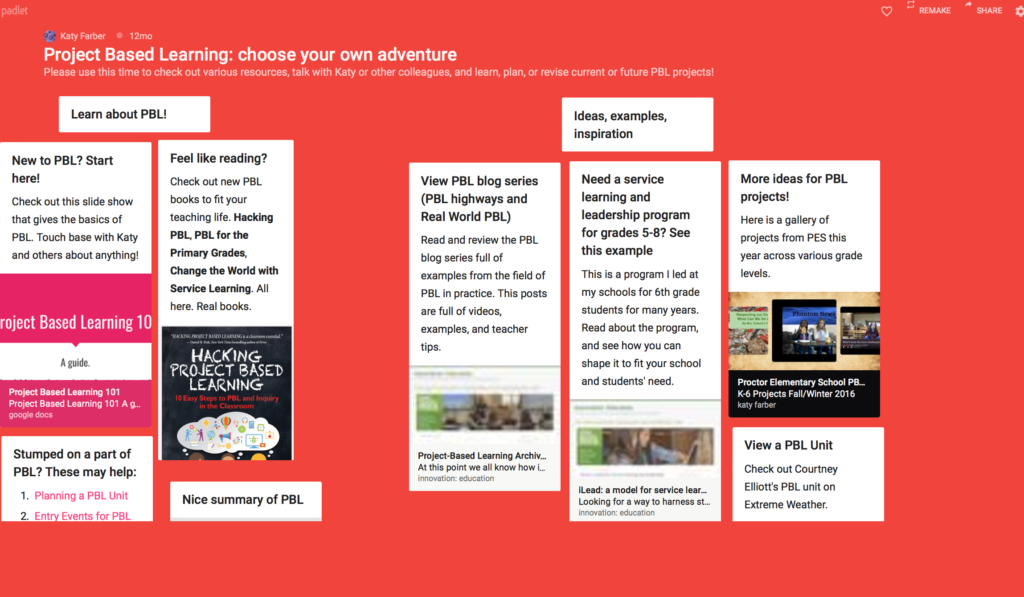
I’ve used it to organize resources that are differentiated as well. You could post “Ready to start?” Then: “On your way!” Kids could pick their pathways through ideas, resources or sections. You could also label different math problems as mild, medium and spicy and let kids pick their level.
Kids can also create their own pathways and playlists with this tool, and share them with you!
6. Reflection
You can post reflection questions for students on a padlet, and they can fill them in anonymously or not. SO many ways for this to be a fun reflection tool, like we did, and for students to share ideas. This can be a quick formative snapshot, or a longer piece of evidence from students. I’m sure that is just the beginning.
